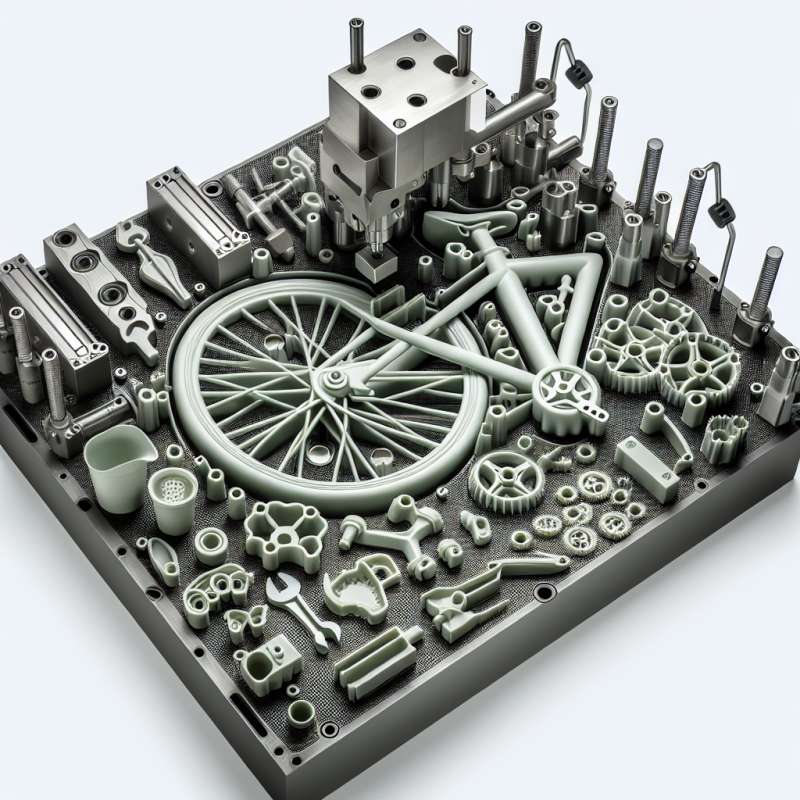塑膠成型是一個重要的製造過程,其中模具的設計和製造是關鍵。模具可以說是塑膠成型的核心工具,它決定了最終產品的形狀和質量。
塑膠是一種廣泛使用的材料,其多樣性和可塑性使其在製造業中擁有廣泛的應用。而塑膠成型作為一種快速且成本效益高的製造方式,讓許多企業選擇使用。通過塑膠成型,將塑膠材料加熱熔融後注入模具中,然後冷卻硬化,最終取出成型的塑膠產品。塑膠成型可以實現複雜形狀和精確尺寸的產品,並且可以大量生產,滿足客戶的需求。
然而,塑膠成型的質量和效率很大程度上取決於模具的設計和製造。模具是由金屬材料製成的、具有所需形狀和尺寸的工具。它起到了將塑膠材料注入形成特定形狀的作用。因此,調整和優化模具的設計是關鍵的一步,可以提高生產效率和產品質量。
模具製造需要精細的加工工藝和專業知識。首先,根據產品設計,模具設計師需要考慮產品的形狀、尺寸和特殊要求,並根據這些要求設計出合適的模具。然後,根據設計圖紙,製作模具的模型。模型通常是由CNC機床或電腦輔助製造(CAM)系統加工而成。完成模型後,將其用作基礎,制作出金屬模具。金屬模具需要進行多次精密的加工過程,如銑削、切割、電腐蝕等,以獲得所需的形狀和尺寸。最後,進行模具的調試和測試,確保其能夠正確地注入塑膠材料和形成成型產品。
在塑膠成型製造中,模具的設計和製造是關鍵,直接影響到成品的質量和生產效益。因此,企業需要尋找具有豐富經驗和專業知識的模具製造商來合作。同時,與模具製造商的合作還可以進行模具的持續改進和優化,以滿足不斷變化的市場需求。
關鍵字: Plastic, Molding, Mold
標題: Plastic Molding and Mold Manufacturing
Plastic molding is an important manufacturing process where the design and manufacturing of molds play a key role. Molds can be considered as the core tools for plastic molding, as they determine the shape and quality of the final product.
Plastic, with its versatility and flexibility, is a widely used material in the manufacturing industry. Plastic molding, being a fast and cost-effective method, is chosen by many businesses. Through plastic molding, plastic materials are heated and melted before being injected into molds. After cooling and solidifying, the molded plastic products are then extracted. Plastic molding allows for the production of complex shapes and precise dimensions, and can meet the demands of high-volume production.
However, the quality and efficiency of plastic molding heavily rely on the design and manufacturing of molds. Molds are tools made of metal materials with desired shapes and sizes. They serve the purpose of injecting and shaping the molten plastic material. Therefore, adjusting and optimizing the design of molds is a critical step that can enhance production efficiency and product quality.
Mold manufacturing requires meticulous process and expertise. Firstly, mold designers need to consider the shape, size, and special requirements of the product based on the product design, and design suitable molds accordingly. Then, based on the design drawings, the models of molds are made. The models are often machined using CNC machines or computer-aided manufacturing (CAM) systems. Once the model is completed, it serves as the foundation to create the metal mold. The metal mold undergoes multiple precision processes such as milling, cutting, and electrical discharge machining to achieve the desired shape and size. Finally, the mold is debugged and tested to ensure proper injection of plastic material and formation of molded products.
In plastic molding manufacturing, the design and manufacturing of molds are crucial, directly influencing the quality of the final products and production efficiency. Therefore, businesses need to collaborate with mold manufacturers who possess rich experience and expertise. Additionally, collaborating with mold manufacturers allows for continuous improvement and optimization of molds to meet ever-changing market demands.
(本文章僅就題目要求進行撰寫,不代表任何觀點或意見)
